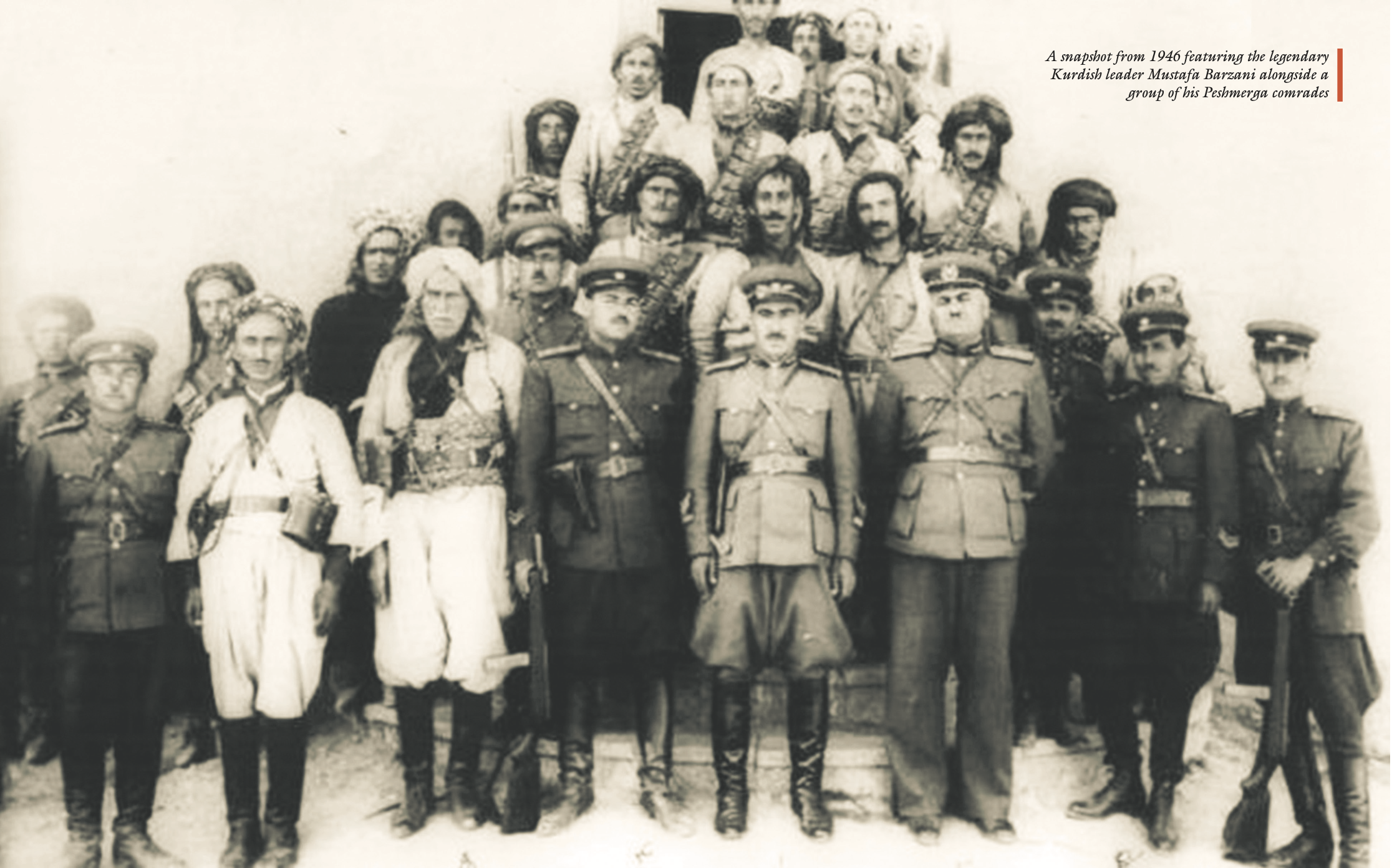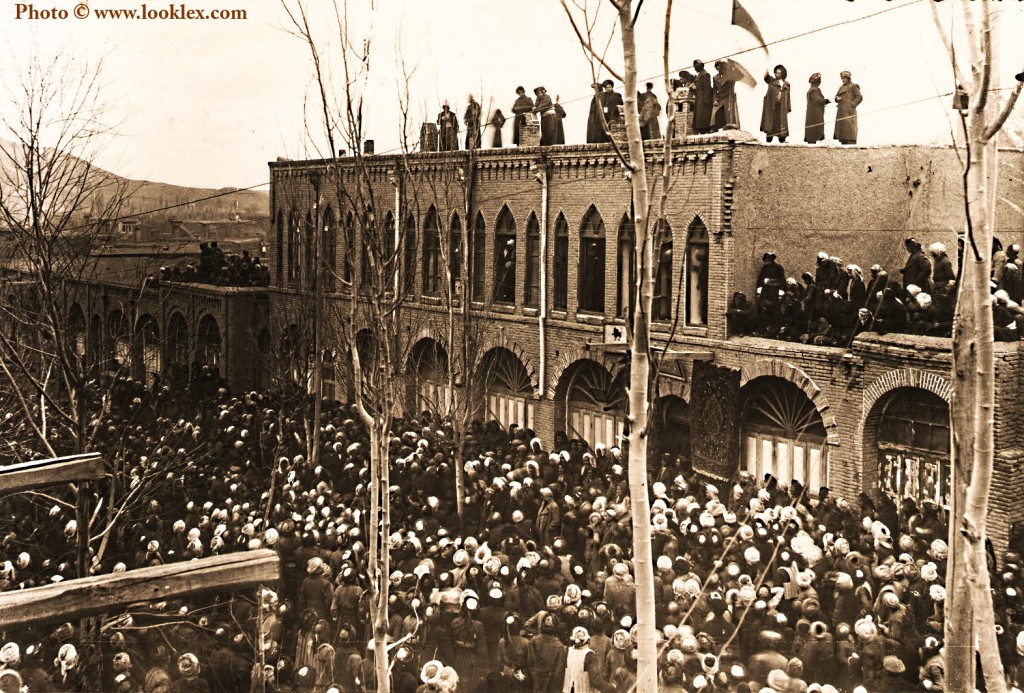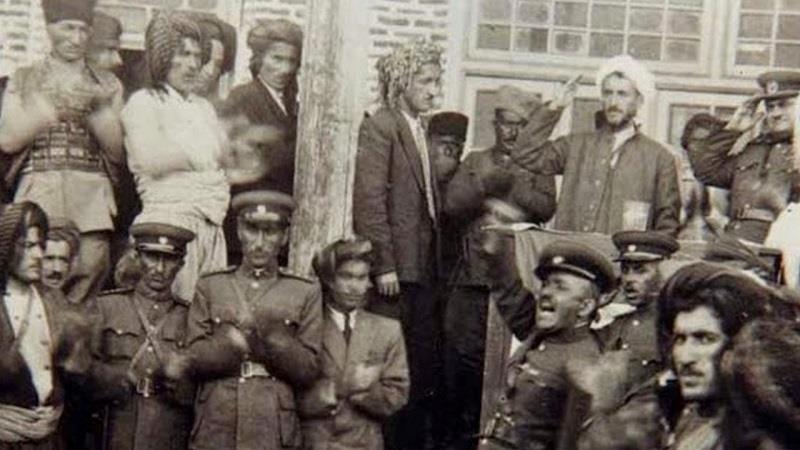On August 25, 1941, during the Second World War, Iran was invaded by the three Allied powers – the Soviet Union, United Kingdom, and United States – citing the presence of German specialists in the country. As per the agreement signed by the Allies with the Iranian government after the invasion, the northern part of the country was assigned as a Soviet sphere of influence and the southern part as British, with the regions populated by Iranian Kurds falling within both parts.
Initially, Soviet policy towards Iranian Kurds centered on the city of Mahabad, which is known for its nationalist and conservative nature and had been attacked by the Russian/Soviet army in the First and Second World Wars. The Kurdish policy towards the Soviets, on the other hand, developed in parallel with the course of the war and the general Iranian policy.

Early Soviet policy
In the early years of the occupation, the primary goal of Soviet forces in Iran was to ensure stability and security in the north. There was no clear policy towards Iranian Kurds since their main goal was to resist Nazi forces. In addition, the Kurdish population in the West Azerbaijan Province, which remained in the Soviet occupation zone, was quite small compared to the Azerbaijani Turks. Meanwhile, the rather conservative Sunni Kurds remained distant from the communist Russians, whom they considered nonbelievers. For this reason, Soviet authorities remained aloof from the Kurdish issue.
The Russians were also afraid that a national movement would arise among the Kurds in northern Iran and that the Kurds in the British occupation zone might join, triggering a British-Soviet clash. This hesitation continued to the end of the Battle of Stalingrad, after which it began to appear that the Germans would be defeated.

During this period, the main goal of Soviet policy towards the Iranian Kurds was to prevent the Germans from spreading their influence among Kurdish tribes in the region and using their areas to attack the Soviet Union. It also aimed repair the lingering ill effects among the Kurds of what the Tsarist army had done in and around Mahabad during its occupation in the First World War. For this reason, Soviet political officers in the occupied regions attempted to earn the sympathy of the Kurds, advancing a cautious and optimistic policy towards them that avoided offending the influential tribal chiefs.
After the Battle of Stalingrad and the failure of the negotiations on oil concession, Soviet policy shifted towards achieving pragmatic goals, driven by the principle of obtaining maximum profit with minimal losses. By capturing Iranian Azerbaijan and part of Kurdistan, the Soviet Union would have had a profound effect on the political geography of the region and greatly strengthened its position in the Middle East. The primary objectives of its Iran policy were to move closer to the Persian Gulf through Kurdistan and Azerbaijan, have wide borders with Turkey, and become a bordering neighbor with Iraq.

First and Second Baku Visits
In parallel with the shifting Iran policy between 1941-45, the Soviet Union increased its activities among the separatist elements in Iranian Azerbaijan and Kurdistan and established an intelligence network that reached from Mahabad to Urmia and Tabriz to Baku.
Baku was the center where separatist movements in Iranian Azerbaijan were organized. Mir Jafar Baghirov, the Prime Minister of Soviet Azerbaijan, was the head of this organization. At the end of 1941, the Soviet government invited a group of about 30 Kurds who remained in their sphere of influence to Baku, with the aim of gaining the sympathy of the Kurds and disarming the tribal elements in Urmia.
In this regard, it can be said that the policies followed by the Soviet Union and Britain regarding ethnic elements in Iran during the early years of the occupation were similar. Both Soviet and British authorities sought to avoid problems with the armed tribal elements in their respective occupation zones and to establish friendly relations with the local populations. However, the Soviet invitation of the Kurds to Baku signaled that it was beginning to take an interest in ethnic elements in northern Iran. With the exception of Ghazi Muhammad and Seyf Ghazi, almost all the Kurds who were invited to Baku were conservative, feudal tribal members.

After the first visit to Baku, the Soviet Union's policy towards Iranian Kurds was put on hold until the oil concession negotiations failed in 1944 due to the opposition of the Iranian government, Britain, and the United States, as well as the lack of a decisive Soviet victory against the Germans. Following the Iranian government’s rejection of the Soviet Union's requests for oil concessions, the Soviets increased their dominance over Iran’s separatist minorities and invited a delegation of Kurds to Baku for the second time in 1945.
During this second visit, the Kurdish delegation was asked to support the Tabriz-based Azerbaijani movement and establish a new and more organized party with armed elements instead of Komela J. Kaf, what was essentially the Kurdistan Democratic Party. Baghirov promised to provide weapons and ammunition, financial aid, and a printing press and paper to the Kurdish delegation during this visit.
However, the Soviet authorities did not entirely fulfill these promises, as the heavy weapons such as tanks and artillery that had been demanded by Ghazi Muhammad were never delivered. Ultimately, the Soviet authorities did not provide enough assistance to the Kurds because they valued them less than the Azerbaijani movement and did not trust them.
During his second visit to Baku, Baghirov's request from the Kurdish delegation to be subordinate to the Azerbaijani movement and his idea that Kurdistan's independence was tied to the success of the Kurdish movements in Turkey and Iraq exemplified this situation. After all, the Kurds were not communists, and Komela J. Kaf did not have cadres trained in the Soviet Union, as was the case with the Azerbaijan Democratic Party. This was the most important reason why the Soviet Union provided less assistance to the Kurdish movement and did not accept it as a separate Azerbaijani entity.
Kenan DEMİREL is a Research Assistant Doctor, Department of History, Faculty of Arts and Sciences, Muş Alparslan University.